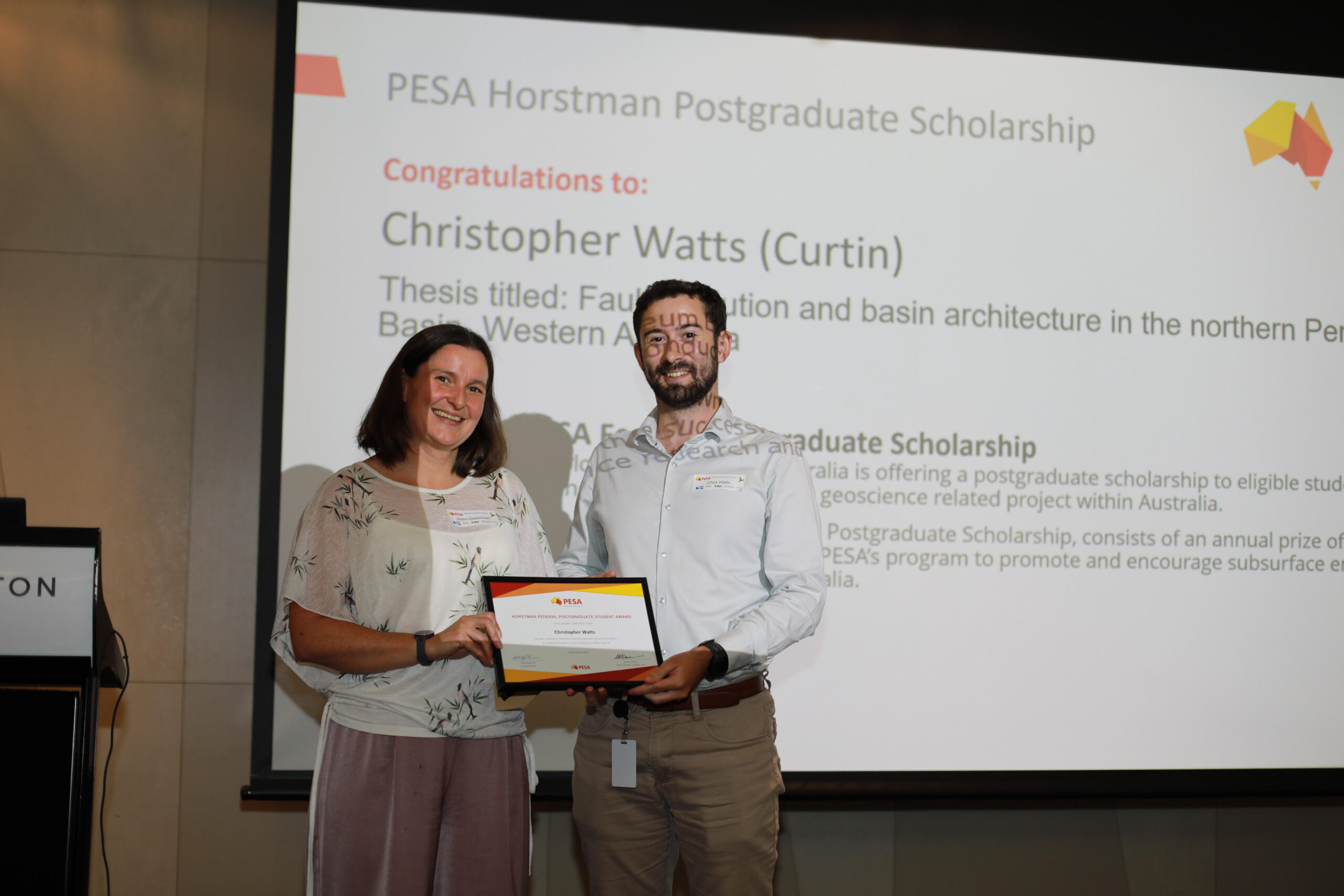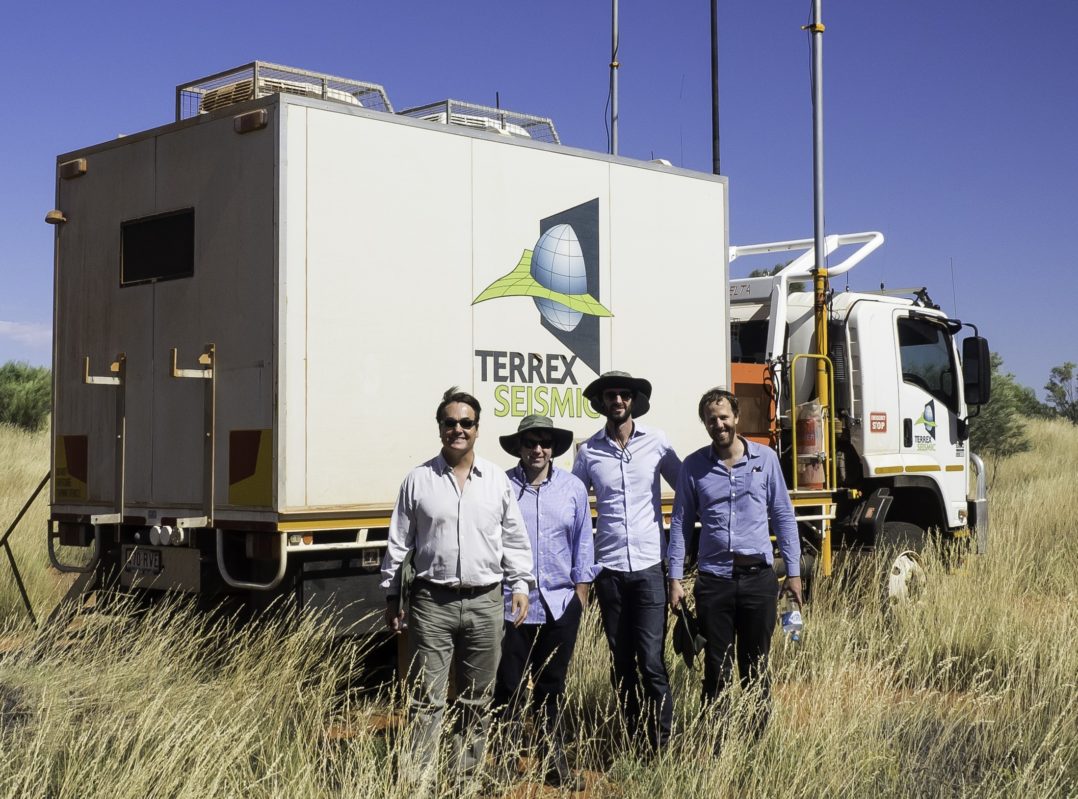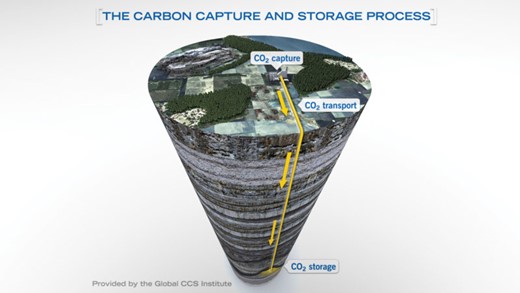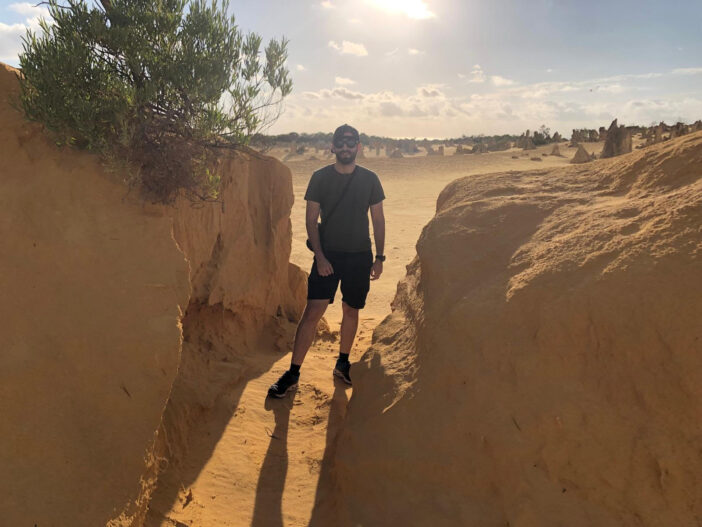
The Horstman Federal Postgraduate Scholarship, initially launched by PESA in 2019,
continues to attract a growing number of talented applicants pursuing energy geoscience
focussed PhD and Masters projects at universities across Australia.
Last year, a record 21 applications were received for the PESA Horstman Federal
Postgraduate Scholarship from candidates based in Brisbane, Sydney, Wollongong,
Adelaide, and Perth. Research topics were very diverse, ranging from regional basin studies
to CO2 sequestration and storage projects as well as experimental hydrogen resource
studies.
The overall technical quality of research projects continued to impress, with many projects
having the potential for providing new insights into current areas of interest in energy
geoscience. It is worth noting that 11 of the research projects were associated with either
CO2 sequestration or the investigation of natural hydrogen exploration and underground
storage, which reflect the growth of new energy projects and energy transition studies in
energy geoscience research at Australian universities.
Following comprehensive assessment of the scholarship applications by the PESA
Education Programs & Scholarships Sub-Committee, Christopher Watts, PhD candidate
from Curtin University, WA (Department of Earth and Planetary Sciences), supervised by
Professors Chris Elders, Nick Timms and Dr. Hugo Olierook, was selected as the successful
recipient of the 2024 PESA Horstman Postgraduate Scholarship.
Christopher’s thesis topic, titled “Fault evolution and basin architecture in the northern Perth
Basin, Western Australia”, aims to elucidate the timing of initiation of faults how and when
they reactivate, and determine ways in which these structures influence the subsequent
development of the northern Perth Basin, one in a series of predominantly NNW–SSE
trending graben and half graben (Fig. 1). In recent years, the availability of new and
reprocessed 3D seismic data in the northern parts of basin, combined with new regional
deep crustal seismic surveys acquired by GSWA in 2024, has provided Christopher (Chris)
with the opportunity to investigate and re-evaluate the structural evolution of the northern
Perth Basin, specifically focusing on Paleozoic structures. Preliminary results from Chris’s
research include new insights into the timing of fault movements and fault seal integrity in
the basin and indicate that the Perth Basin and the larger east Gondwana interior rift may be
more complex and segmented than previously thought. An improved holistic understanding
of the structural evolution and stratigraphic architecture of the basin has direct implications
for further petroleum exploration and development of known hydrocarbon plays, as well as
future investigations into the potential for carbon capture and storage, geothermal energy
resources and hydrogen exploration within the northern Perth Basin.
Chris will be presenting detailed results from his research project at a PESA WA technical
talk later this year.
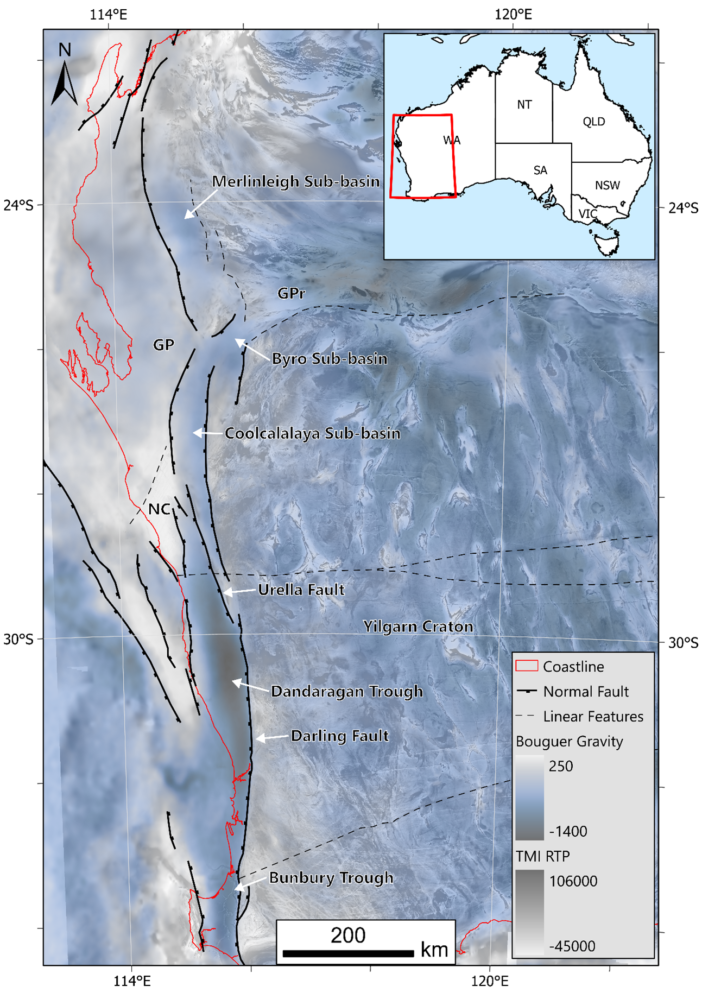
Figure 1 Map of the Western Margin of Australia, highlighting the large-scale N-S trending normal faults and lineaments overlying Bouguer Gravity (Brett, 2020), and Total Magnetic Intensity reduced to pole (Brett, 2023). Several zones of greater complexity along the margin are observed including the northern Perth Basin around the Northampton complex (NC on the map). GP = Gascoyne Platform, GPr = Gascoyne Province, NC = Northampton Complex.

